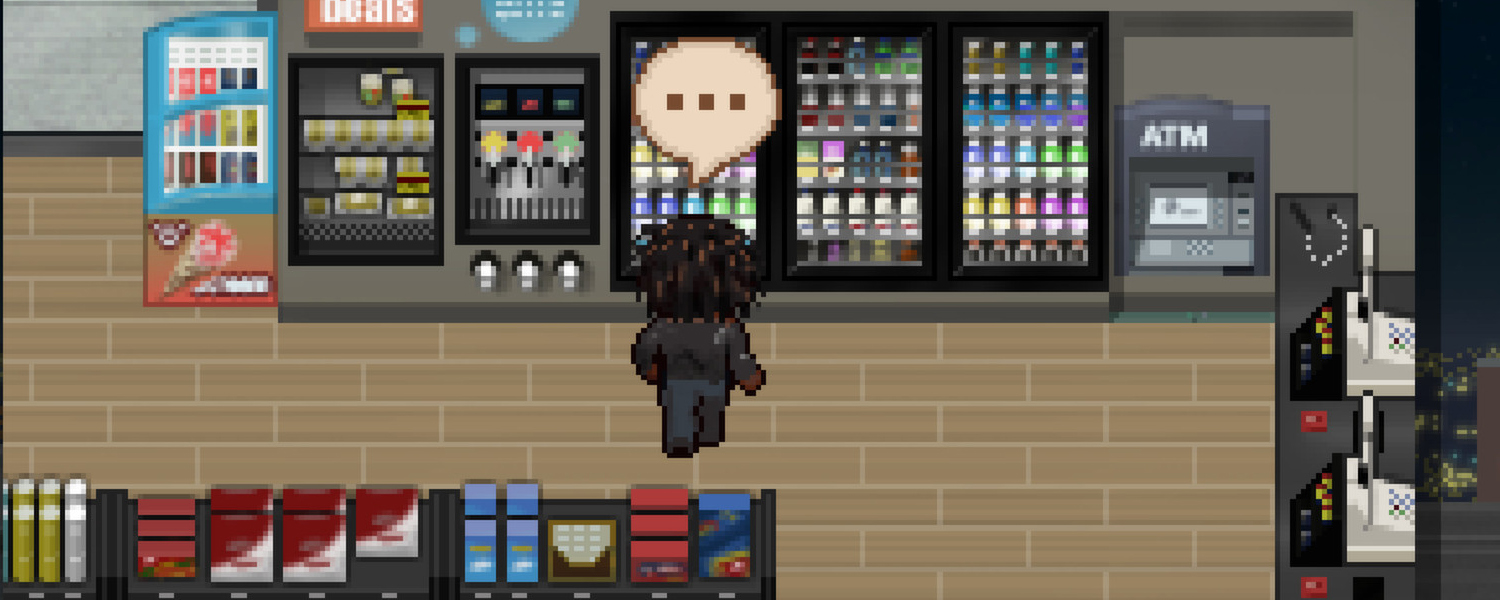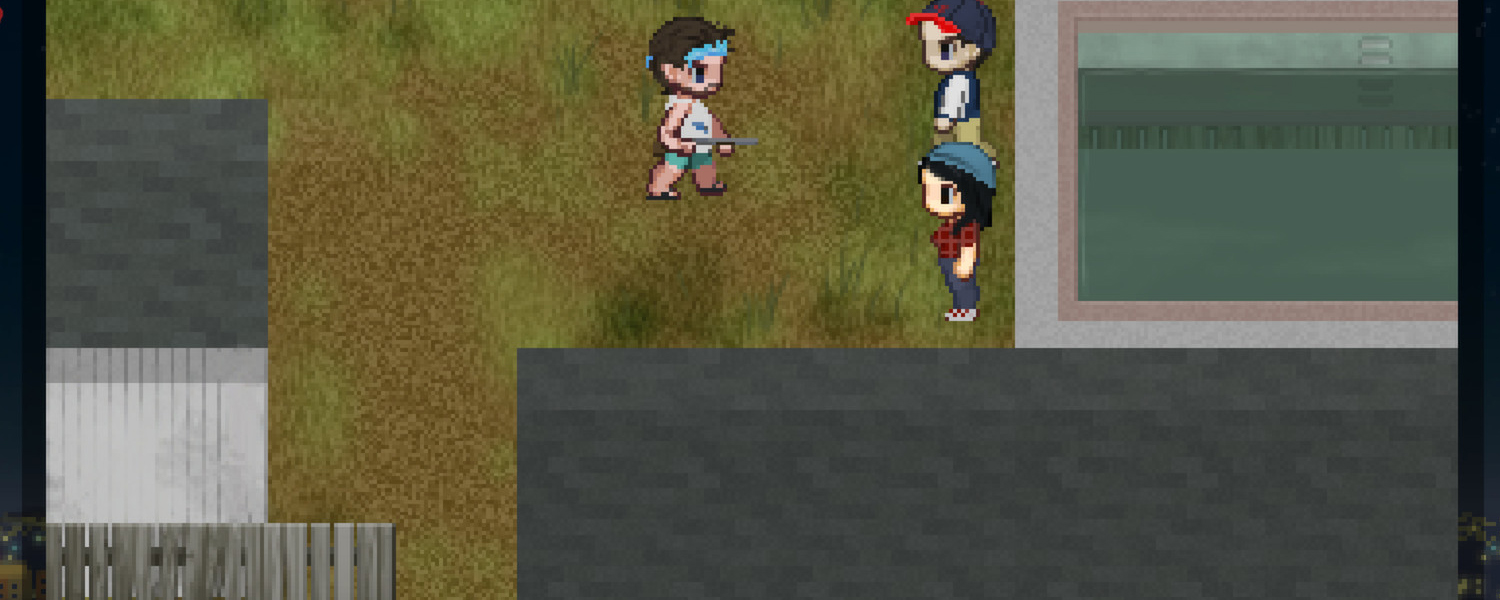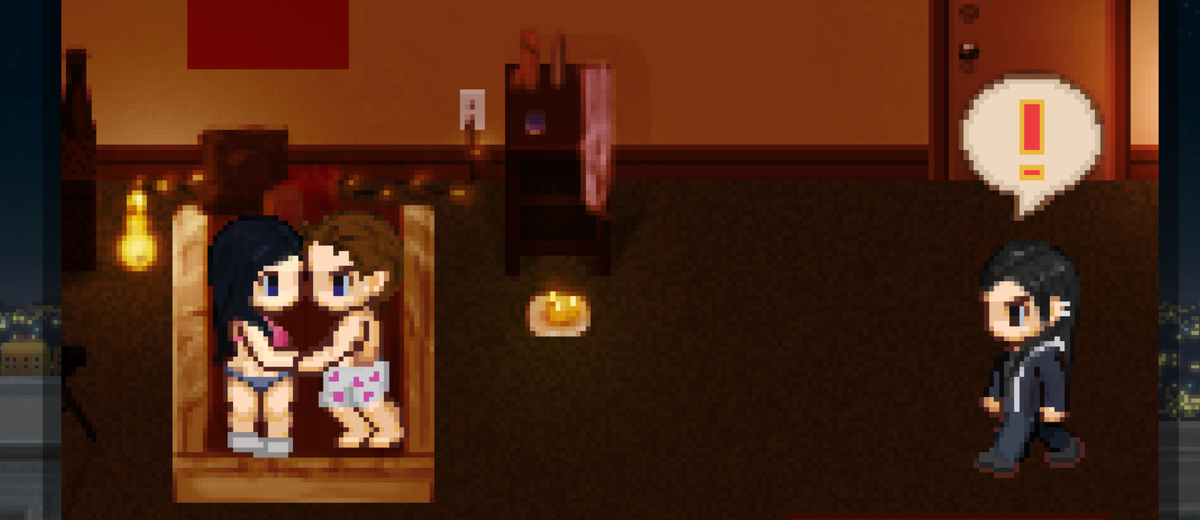

A bright, bursting to life party. A publisher who sees potential in your writing. Despite your promise to only write with your best friend, your partner pushes you to go for it so you do. You aim high and dream of the life of a writing success, making millions and getting married.
Flash forward to a year later and it’s all gone. Your partner has left you, your best friend is gone and you have barely any cash to scrape together rent. You’re living on the streets, eating scraps out of dumpsters in a place called Dubstown, when, as a final insult, you receive a wedding invitation. Your former lover is getting married. You have thirty days to make the costly journey across cities to possibly make one last shot at redemption, or to finally have closure.
And that’s how Always Sometimes Monsters starts. By kicking you straight into the bottom of the barrel, Always Sometimes Monsters strives to tell a story that can be full of redemption, hope and forgiveness. But you have to work for it. The thirty days come and go whether you work as hard as you can to redeem your actions and scrape cash together, or wallow in your own self-pity and despair. Your publisher has given you one last chance to maybe salvage your book deal, and it’s completely up to you to choose whether to make good on your contract or completely ignore it.

Always Sometimes Monsters tells a hard story. The game does not shy away from tough, satirical and graphical situations. The dialogue is smart, the choices are always open and the arc of it all is brilliant. The sheer nature of it all will bring you to tears. Whether they be tears of happiness or tears of despair will be up to you. Always Sometimes Monsters is an experience. It is a powerful story. It is completely character driven. You will hate it if you don’t connect with the friends you make in this journey. And it is completely in your hands to decide how much of an impact the story will have on you.

Always Sometimes Monsters is presented simplistically, graphics-wise. There’s no resolution beyond 1024×720 (at least there isn’t one I saw) and the developers Vagabond Dog don’t explain anything to you. I didn’t even realize the F1 button functioned as an options menu until I read it online. The keys aren’t explained to you at all, and it’s the first of many instances of being thrown into the deep end.
And yes, Vagabond Dog really sell the ‘figure it out yourself’ motif to a tee, which is something I will cover in the gameplay. The game is quite easy to look at, but it’s nothing remarkable. Actually, due to the 16-bit style graphics and layout, it makes it quite a chore to sit through for so many hours. The character models that pop up in dialogue exchanges are quite nice though. Always Sometimes Monsters aims for a more stripped down approach, most likely due to their limited resources, and while it doesn’t look horrible, it’s not particularly engaging either.

As a character driven RPG, I don’t think I’ve played something so overarching and deep in my life. While the very nature of the game is simplistic, the wealth of choices are so large and branching that it’s downright jaw dropping how well Vagabond Dog managed to cover all the bases. From the get go, you’re presented with what could be the best character creation system I have seen. No messing with minute details of your face, no special stats, you are in a party, you go up to people and choose. There are enough presets to cover every race, gender and sexual orientation. I ended up choosing a dark haired young man as my avatar, whose girlfriend was a lovely redhead. What’s interesting is that based on your characteristics, your dialogue could be completely different. Another playthrough as a gay character had people calling me “faggot” right to my face, a playthrough as a woman had people calling me “sweetheart” and saw me being hit on. The dialogue itself is quite well-written, and the only problem I have is that my character sometimes said things I would not say, but that’s not a flaw in the game. That’s a flaw in myself.

And that’s just one example of how Always Sometimes Monsters is so open-ended. You’re given thirty days, and a wealth of places to visit and work at before the eventual wedding, but you could choose to do nothing. You could starve to death on the streets if you wanted to. Your publisher begs you to at least keep a journal of your actions over the thirty days. You could write one page, you could write twenty. You could write every day, or you could write nothing. It is up to you to decide how you want to be. Games like Mass Effect or Fallout try to impart to the player a way of making you the bad or the good guy, but none of those really get the message across quite like Always Sometimes Monsters does. The plot will hit close to home for many people as it did to me, and that alone will inspire you to act like you would in real life. I chose to try my best to help other people and do good, but unfortunately that doesn’t always guarantee you a good ending. Is it a moral of how real life is? How even if you do your best you may not get what you want. Maybe, but I remained dissatisfied to see how I ended up. The injustice of the fate of my character made me well up in tears and made me never want to play this game again.
But I will play it again. I will over and over, exploring just how low or how high I can reach. The gameplay is so threadbare that I cannot possibly recommend it for gameplay alone. Mini-games break up the tedium, but sometimes they’re so tedious that you question why you’re doing it. Moving boxes from a conveyor belt to a truck led me to question why I was doing this in a game, where we aim to escape from real life, but then I realized that I was doing this because the real me would want to see the job done. Chopping up burgers, cleaning up an apartment for an old lady, these are all tedious activities that should not exist in a game, but they do, and I did them.

Always Sometimes Monsters is akin to a choose your own adventure book. There is always a second choice for something. When writing a piece for a newspaper, you could take a ‘bribe’ from a PR spokesperson in order to boost the popularity of an upcoming cineplex, which you soon realize would lead to the demolition of an apartment complex for the homeless and recovering addicts. You could write an article slamming the cineplex’s construction, leading you to win favour with the protesters, or you could take the bribe and write a glowing piece. I took the bribe. Because Always Sometimes Monsters strips from you everything, and it shows you how low you are willing to sink to in order to survive. I needed the money for food. I needed to get to the wedding.
Do you convince your rockstar friend to take drugs again? Do you shoo away his crazy ex? Do you agree to buy drugs for a random girl, buy cheap pills and pocket the change, possibly resulting in her death? I’m literally scratching the surface here on the sheer amount of choices you have in this nine hour adventure. The journey is exhausting, and not many people will strive to play it again especially if they got an ending that utterly sucks the joy out of them. Coupled with the tedious activities you could choose to partake in and Always Sometimes Monsters is a journey that is very, very hard to resubmit to.



